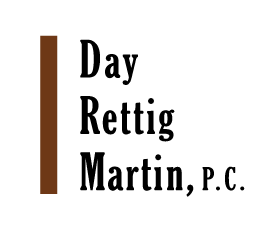It is expected that Judges will always apply the law evenly and fairly without any bias affecting their decisions. However, as Attorney Ron Martin learned from a presentation by the Honorable Mark W. Bennett at the 2019 All-Iowa Bankruptcy Conference, sometimes judges are influenced by factors they do not even realize are in play. According to a study conducted in 2006, Inside the Bankruptcy Judge’s Mind, inherent biases may impact a bankruptcy judge’s decision without the judge even knowing it is happening. The study identified two such factors as Anchoring and Framing. It is important for bankruptcy attorneys to understand what these factors are and how they can impact a judge’s ruling in a bankruptcy case
Anchoring
The study defined “Anchoring” as when a person uses an initial value to determine an ultimate estimate. The study tested bankruptcy judges’ susceptibility to Anchoring by asking them to determine a new interest rate on a restructured loan. Half of the judges were provided the old interest rate, and half were not. It should be noted that the old interest rate should not play a factor in determining the new rate in this situation. The study found that the two groups’ average interest rates differed by almost 1%. This was concluded to be a significant difference.
Knowing that judges are susceptible to Anchoring, attorneys should be able to structure their filings and the manner in which they deal with the court accordingly.
Framing
The second factor tested in the study that yielded positive results is “Framing.” Framing occurs when something is presented as a risk resulting in a gain or a loss. The study found that people are more likely to engage in riskier behavior when choosing between options that appear to represent losses than when those options represent gains. For example, people would rather be given $100 than have a 50% chance of winning $200, but they would rather have a 50% chance of losing $200 than give away $100.
In order to test Framing with bankruptcy judges, the study provided two groups with varying options for a liquidating company. Group A was given options that were framed to represent the loss, and Group B was given options that were framed to represent the gain. The options were the same, they were just worded differently for each group. The study found an 18.5% difference between the rulings of the two groups.
Knowing the importance of Framing, attorneys should be able to use Framing to their advantage when drafting filings.
Conclusion
Framing and Anchoring are not the only inherent biases that may affect the outcome of a judge’s decision. Judges may also be influenced by their political party, morals, or even the appearance of the debtor without the judge even realizing it. Attorneys cannot control all of these inherent biases or know how they may impact their cases, but they can understand them and try to use them to the advantage of their clients.
To further explore inherent biases that affect judges, your attention is directed to Rachlinski, Jeffrey J.; Guthrie, Chris; and Wistrich, Andrew J., “Inside the Bankruptcy Judge’s Mind” (2006). Cornell Law Faculty Publications. 1084. https://scholarship.law.cornell.edu/facpub/1084
If you have a question about bankruptcy, call Attorney Ron Martin.


 Visit Our
Visit Our Contact Us
Contact Us